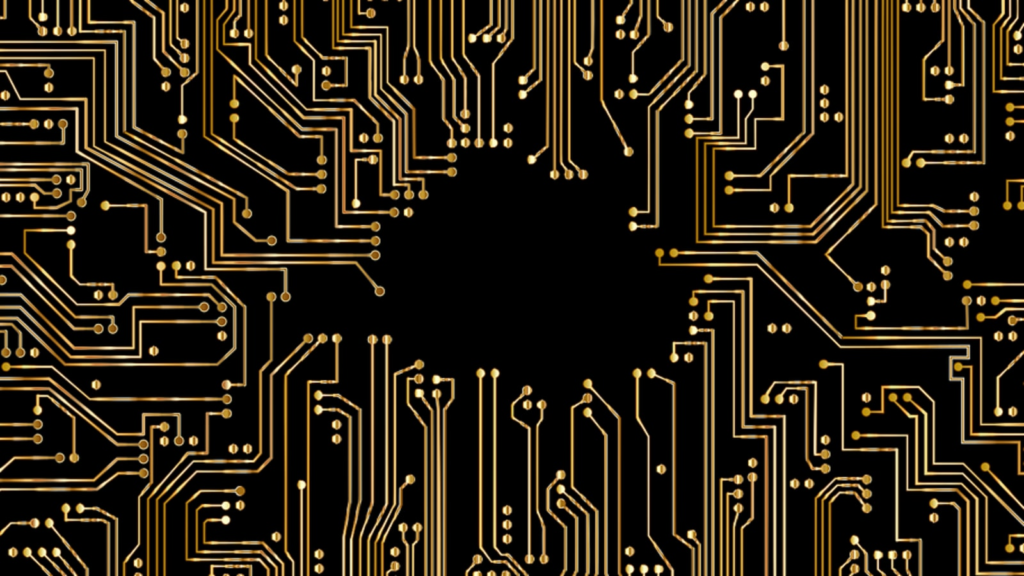Gold mining can be a dirty business. Even with relatively rich deposits, usually found in remote areas, you need giant excavators, huge crushing machines, lots of water and highly toxic chemicals, like acids and cyanide, to extract just ten grams of gold from a single tonne of ore (there are 31 grams in a troy ounce). At current rates, that is worth over $800.
A different sort of pay dirt, however, offers the prospect of a much greater return for urban miners: the printed circuit boards (PCBs) found in rapidly growing mountains of electronic waste. Estimates vary, but a tonne of PCBs could contain 150 grams or more of pure gold, which, because it does not tarnish, produces stable electrical connections. There are also other valuable materials used alongside gold, including silver, palladium and copper, which, if recovered, could push the total haul to well above $20,000 per tonne.
According to the UN, some 62m tonnes of electrical items, ranging from domestic goods to computers and mobile phones, were disposed of globally in 2022. Less than a quarter is reckoned to be recycled, at least in any formal way. Typically, the PCBs are removed and crushed before being either burned in a furnace to melt out metals or treated with chemical solvents, like strong acids. As these processes produce large carbon emissions and have poisonous by-products that are difficult to clear up, companies are developing a number of cleaner recycling methods. One of the more intriguing employs bacteria to do the actual extraction of metals.
Bioleaching, as this process is called, is an old idea: more than 2,000 years ago, the leaching of metal was seen to turn the water in copper mines blue. It was not until the 1950s, though, after bacteria were found to be responsible for the phenomenon, that the process was commercialised to recover leftover material in tailings, the liquid and solid waste from mining operations. Bioleaching relies on the metabolism of certain naturally occurring bacteria, such as Acidithiobacillus ferrooxidans, which produce oxidising agents that dissolve metals into solution. The metals can then be recovered with various separation and filtration methods. When used outdoors on tailings the process can take months and is not very efficient.
Contained within a custom-built modern processing plant, however, bioleaching can be sped up and improved with the use of a combination of similar bacteria. These, too, are naturally occurring and safe to work with as they are non-pathogenic. The trick, according to Bioscope Technologies, an urban-mining company building a bioleaching plant in Cambridge, England, is to keep the bacteria in their preferred conditions. This includes a carefully controlled acidic environment, a warm temperature below 50°C and a good supply of oxygen bubbled into their breeding tanks. Once these pampered bacteria are mixed with crushed PCBs in a reaction chamber they digest many of the metals within a day or two.
The resulting liquid is then treated in a number of ways to recover the metals. Gold quickly precipitates out with the addition of a little water. An electric current passed through the liquid in an enclosed system recovers copper in a manner similar to electroplating. Having done their stuff, the bacteria are returned to their breeding tanks before being used again.
The idea is to create an enclosed, circular recycling system that accelerates a natural process and is sustainable, says Jeff Bormann, Bioscope’s chief executive. Trial production runs are already under way with full production due to begin in January. The Cambridge plant has the capacity to process 1,000 tonnes of PCBs a year, although plans are already being discussed to build a much bigger one.
Bioscope was set up as a separate entity by N2S, a sister company that specialises in recycling IT equipment, and which supplies Bioscope with the crushed PCBs. Before being treated, Bioscope mechanically separates out plastics and fibreglass, the base material on which the circuits are built. Plastics can be sent for recycling and the company extracts silica from the fibreglass for use in specialised ceramics.
The process is capable of recovering almost all the gold, silver, copper and palladium from the crushed PCBs, although the exact amount depends on the type of circuits being recycled. Servers and telecoms equipment tend to contain the most precious metals, domestic appliances less so. The recovered metals are pure enough to be used again in electronics.
At the end of all the treatments, nothing is yet being thrown away for good. This is because new bioleaching methods are being developed to get at some of the non-precious, though still valuable, metals in PCBs. The recovery of tin was recently added, says Mr Bormann, with zinc, gallium and tantalum planned for next year. The goldbugs have plenty of work ahead.
Catch all the Business News, Market News, Breaking News Events and Latest News Updates on Live Mint. Download The Mint News App to get Daily Market Updates.
MoreLess

